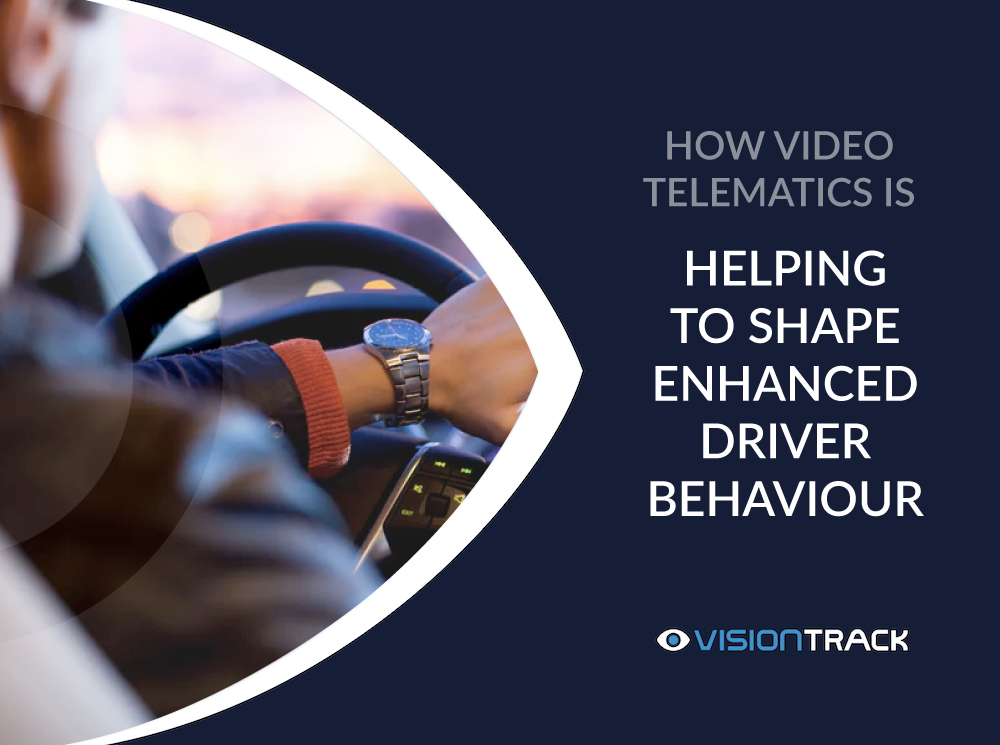HOW VIDEO TELEMATICS IS HELPING TO SHAPE ENHANCED DRIVER BEHAVIOUR
Written by VisionTrack
31 July 2019
Video telematics has been shown to have a positive impact on road safety, protecting businesses, employees and other road users. Connected vehicle cameras are providing fleet managers with added insight – allowing detailed monitoring and analysis of driving styles, while identifying areas of fleet risk. This blog takes a looks at how video telematics is helping to improve driver behaviour and supporting an organisation’s fleet safety strategy.
Completing the Picture
While a traditional vehicle tracking system can capture much of the data you need to investigate a road collision – for example, location, speed, g-force, exceptions – it cannot provide accurate context without video evidence. What might seem to be a needless or poor driver action, may have been in response to an unexpected situation outside their control, which could have prevented a serious incident happening. Only with connected cameras can a fleet create a complete picture of exactly how vehicles are being driver by combining vehicle data with high-quality footage of a collision, near miss or harsh driving event.
Prevention and Improvement
There is a well-known safety mantra that “today’s near miss is tomorrow’s incident”. By analysing video footage alongside driver behaviour data, it is possible to identify potential risks within a fleet operation and those drivers that are most likely to be involved in a vehicle collision. Through enhanced driver engagement, preventative action can be taken to improve driving styles to stop incidents happening in the first place. The potential safety benefits of this approach can be significant with some fleets reporting a reduction in incident frequency as high as 80 percent.
Enhanced Driver Engagement
Just having connected vehicle cameras fitted will act as a deterrent to poor driving styles as drivers are aware that they are being monitored (vehicle tracking systems can have a similar impact on driver behaviour). However, the true safety benefits go way beyond this with the ability to measure, analyse and take appropriate action. Video telematics supports effective communication and engagement, providing a useful tool that can positively influence the mindset of drivers and help prevent avoidable road collisions.
Targeted Training Strategy
Driver behaviour reporting and league tables, backed by captured video footage and snapshots, make it possible to gain meaningful information regarding the best and worst performing drivers within a fleet. This data allows a fleet manager to adopt a targeted training strategy, using available resources in the right places by concentrating on those employees that need the most education and guidance. One-on-one driver coaching can also benefit from having individual driver footage, offering a more focused approach based on actual events and a greater understanding of the required improvements and next steps.
Benefits Beyond Safety
The most important benefit from improving driver behaviour using video telematics is of course road safety, but there are a host of others available to fleet managers. Insurance premiums, for example, will be directly and positively impacted by sustained reduction in incident frequency. Meanwhile, the wider adoption of responsible driving techniques will not only better protect the reputation of a business, but also improve fuel efficiency and reduce environmental impact. Simply minimising harsh driving events – braking, accelerating and cornering – and cutting out speeding can dramatically improve fuel consumption.
Technology Innovation
Advances in software and hardware is making video telematics more suited than ever to the demands of driver behaviour monitoring. The forward-facing camera is now available with a second inward-facing device, so a fleet manager can see what a driver is doing when a collision, near miss or harsh driving event occurs.
Meanwhile, specially-designed connected mobile DVRs make it possible to combine a wide range of front, driver, side and rear cameras with complementary road safety equipment such as cyclist detection and advanced driver-assistance systems (ADAS). The latest ADAS solutions, for example, can effectively identify risks including lane departure, forward collisions, tailgating and vulnerable pedestrians or cyclists, while detecting if a driver is tired or distracted by actions such as mobile phone use, smoking and eating.
VisionTrack is the leader in connected vehicle cameras and video telematics. We offer the widest range of connected camera solutions – underpinned by our multi-award winning IoT platform – to help protect your vehicles, assets, staff and reputation. Our innovative solutions are proven to deliver true value to any size of fleet operations including reduced insurance costs, improved road safety, lower operational risk, increased fleet efficiency and enhanced duty of care. If you would like to find out more about how connected vehicle cameras and video telematics can benefit your fleet, why not contact our team to discuss your options.




